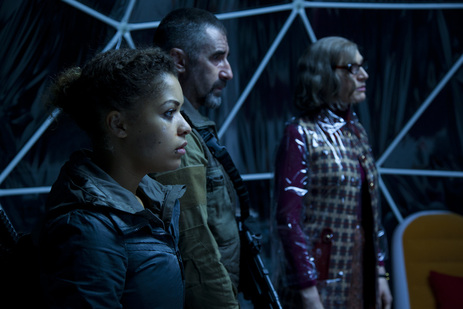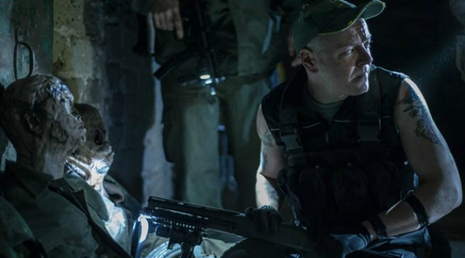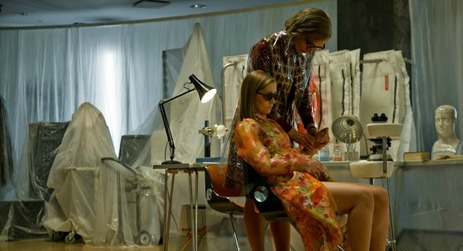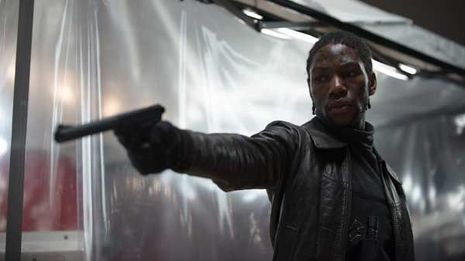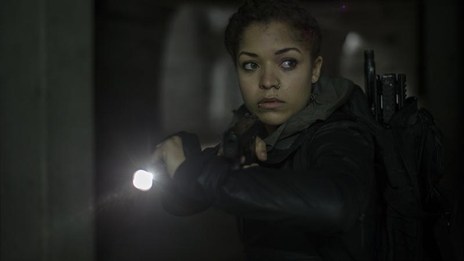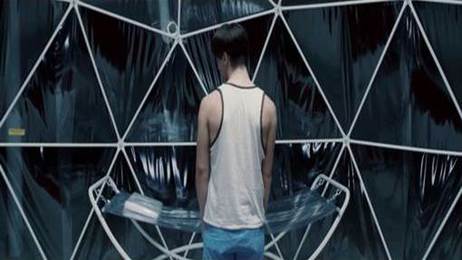|
Director Billy O'Brien’s sci-fi Scintilla ventures into familiar territory. As with his previous efforts, The Tale that the Rat Wrote (1999) and Isolation (2005), scientific experimentation and the dangers of ungodly creations is the focus. Scintilla offers an updated take on the perils of cross-genetic breeding and the film fuses together sci-fi and horror with mixed results. In the present day, a group of mercenaries, led by the gruff and ragged-looking Powell (John Lynch), are hired by a private company to retrieve a specimen sample. Situated deep underground in a Russian bunker is a crossbred human/alien hybrid. The mercenaries must fight their way through a camp of heavily armed militia to get into the lab and retrieve the specimen.
Its own hybrid of action, horror and sci-fi, Scintilla imbues a sense of hysteria to a post-Cold War Russia with supposedly secretive scientific experimentation. The film employs many tropes of the action genre as the mercenaries infiltrate the military camp, not dissimilar to Sylvester Stallone's Barney Ross in The Expendables (2010) who leads a gang of mercenaries mindlessly shooting at stuff. Scintilla also infuses several tropes of the horror genre as secrets often lurk in the shadows of the long, dark hallways. The film employs a couple of jump scares and sharp, high-pitched audio from the screams of characters as a cheap thrill to scare the audience. Whilst Scintilla does seemingly blend these genres with effortless ease under O’Brien’s command, the film is ultimately pigeonholed by the conventions that these genres are often criticised for by audiences and critics alike. The film is aesthetically eerie and the use of bland and dull colours creates a cold feeling that has become almost synonymous with the sci-fi and horror genres. The film’s setting often features long and dark tunnels as the mercenaries often traverse the dark hallways of the underground lab, leaving nothing but the artificial light of the torches on guns and dim-lit bulbs to guide the way. The mystery of the unseen appeals to the ethos of “less is more” and creates much tension throughout the film. There is a lack of character development in the slow paced narrative. The characters are given very little context, which is problematic for an audience trying to engage with them. The lack of depth in the supporting characters makes them appear one-dimensional and feel expendable. Steinmann (Antonia Thomas), for example, has a rather spontaneous moment during a relatively short scene where she expresses her stress regarding the situation and questions the orders, but the reason for this is not explained or foreshadowed. However, the film does get more interesting when addressing Powell and the hybrid. Powell, the head of the mercenaries, is by far the most interesting character. The film introduces him strapped to a chair, unshaven and covered in dirt, slowly being tortured. The scene is juxtaposed by the accompanying diegetic audio of a 1950s upbeat jazz song. The contradiction created between the visual and aural elements connotes Powell’s strength and relaxed mentality and establishes him as the main protagonist. The hybrid creature’s state of mind is portrayed via point of view shots. The point of view is not of a standard human however, but rather that of a bug as the lens is presented through several hexagonal shapes. The distorted eyesight infers the hybrid’s confusion as it is surrounded by lab equipment. Its intentions are also unclear and it is not sure whether to attack people or to discover its purpose in life. This technique builds anticipation and creates curiosity for how the hybrid will react. This also infers the creature’s unnaturalness, as much as the inhumanity of genetic experimentation, by comparing the hybrid’s eyesight to a human’s. The film’s looks conform to the conventions of horror and sci-fi and the characters of Powell and the hybrid are interesting to watch, even if the supporting cast is often plain and dispensable. The result is a standard blend of sci-fi and horror that does show promise and potential, but is ultimately compromised by its reliance on overused genre conventions. |

